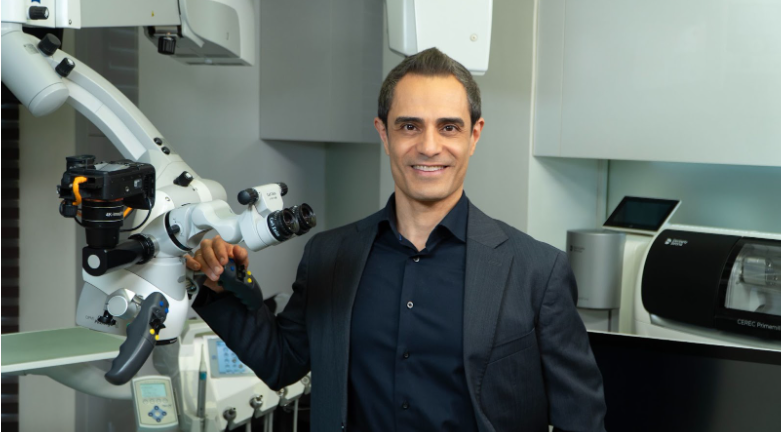Dr. Shakibaie, author of numerous treatment methods in Microscopic and Digital Dentistry, along with his research team at the Department of Preventive and Restorative Dentistry Sciences at the University of Pennsylvania, have newly published the innovative treatment protocol of Microscopically Guided Rubber Dam Integration (MGRI), as result of a 4-year development program.
Generally, there are 2 working protocols in dentistry.
First, the conventional and most common protocol of relative dryness, meaning the dental team uses cotton rolls and suction to dry the desired working field in the mouth.
Second, advanced and rarely used protocol of absolute dryness, or Rubber Dam Isolation, meaning dental teams utilise a thin latex or nitrile square sheet to isolate a specific tooth or teeth area of the mouth during treatment procedures.
The Rubber Dam Isolation, first time designed by US dentist Sanford Christie Barnum in 1864, is far superior to the conventional dryness, since it creates a fully dry working field, while securely preventing contamination with saliva, blood, and moisture, improving visibility by holding back lips, cheeks, tongue, and lastly protecting patient from aspiration of dental tools.
Considering the mentioned significant advantages, Rubber Dam Isolation became standard in modern dentistry over the last decades.
Nowadays, besides multiple scientific and technical advancements in adhesive esthetic dentistry, Rubber Dam Isolation emerges as a cornerstone for achieving long-lasting and predictable outcomes.
In their latest article, Shakibaie and his research group describe the systematic use of Dental Operating Microscope (DOM) while applying Rubber Dam Isolation.
The resulting technique, named Microscopically Guided Rubber Dam Integration (MGRI), leads to numerous benefits in utilising Rubber Dam, mainly through high magnification with aligned illumination of the denture and notable improvements in the dentist’s working ergonomics.
This protocol leads to a remarkable elevation of accuracy and efficiency in all steps of Rubber Dam Integration, from clam selection and setting, soft tissue coverage, marginal inversion to final removal of Rubber Dam.






